If you want to make the most of the great outdoors, the night can offer you just as much opportunity to enjoy a good hike as the day does. Night hiking can be a great experience, but once the sun has gone down the outdoors can be a very different place. It contrasts from daylight hiking in many ways. You should always consider your approach and be well prepared for the challenges you may face. Many individuals go out ill-equipped and unaware of their surroundings and this is when accidents can happen.

If you go out at night you need the right equipment and it helps to have some knowledge on the subject.
Why Go Out at Night?
Temperature can make a big difference, it is often cooler at night. In hot climates, these temperature differences can mean it is preferable to walk once the sun has gone down. However, in some parts of the world the changes in temperature between night and day can be drastic, the temperature can change from a sunny day to below freezing at night, so make sure you know your environment.
You can witness the world in a new light, or better said, in moonlight, or only under the stars. To be able to gaze at the stars is an amazing experience and being out on a clear night without the interference of light pollution means you have the opportunity to view the milky way. Stargazing is great and if the moon is out, it can assist in shedding light on your surroundings, so you won’t need to use torches.
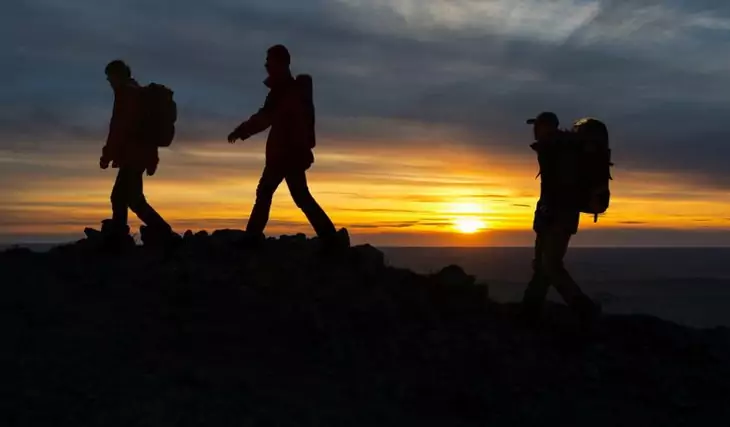
Many animals are nocturnal and the world becomes theirs at night. This means you have a good chance to go out and see a wealth of wildlife. Owls and bats come alive at night, as well as a host of other animal life. Their calls and scratchings can appear to sound amplified as they go about their nocturnal business. Be on the alert and you may have the pleasure of spotting something wonderful.
You may have walked the same trail a multitude of times and know it like the back of your hand. Going out at night brings a new dimension to a hike: landmarks, noises and terrain features can appear very different. Welcome to a whole new world of adventure!
How to be well prepared
- Always Let Someone Know Your Plans: Leaving a proverbial trail of breadcrumbs can make a huge difference! Always inform someone that you will be heading out and give them as many details as possible. You should always inform them of your planned starting point, end destination and the route you will follow.
- If You are a Newbie: If you are new to this type of nocturnal adventure, then ensure your first planned expedition follows a route you know well. Stay in your comfort zone and stick with a well-trodden path you are very familiar with. You can use this time to accustom yourself to the change of environment, gain confidence and learn about things such as natural night vision.
- Do Not Go Alone:Having company is great, not only to share the experience, but it also means you can keep each other safe should anything happen. Lack of visibility can be a big contributing factor that can lead to an accident occurring when outdoors after dark. Even by day, an accident could befall you for any number of reasons and more so at night. Safety in numbers as the saying goes, if anything were to happen to you, it helps to know there are people available to assist.
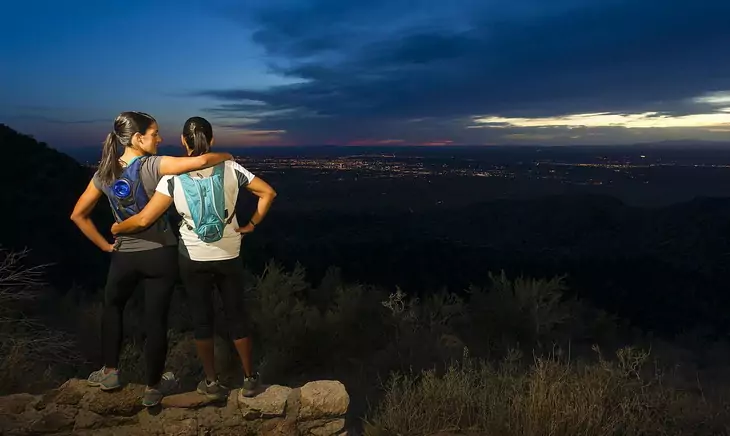
A couple of rules worth sticking to
Always wait for a member of your party to return to the group if you separate (toilet breaks) before continuing on your journey. Stay within a sensible distance of each other. Space yourselves adequately, not too close together or too distant. This helps to ensure you know where you all are and helps to avoid the chance of a domino-style accident if one individual were to slip, trip or fall. An advisable distance is normally at about two meters apart.
Bring the Correct Gear
It is of the utmost importance to head out prepared and well equipped no matter the hike. This advice is even more applicable when you are tackling nighttime conditions. Safety is paramount, so make sure you have everything you need, just in case. Always remember to pack your bag methodically as it can be challenging locating objects in a dark environment. For tips on how to properly pack your backpacks, see our article on this topic.
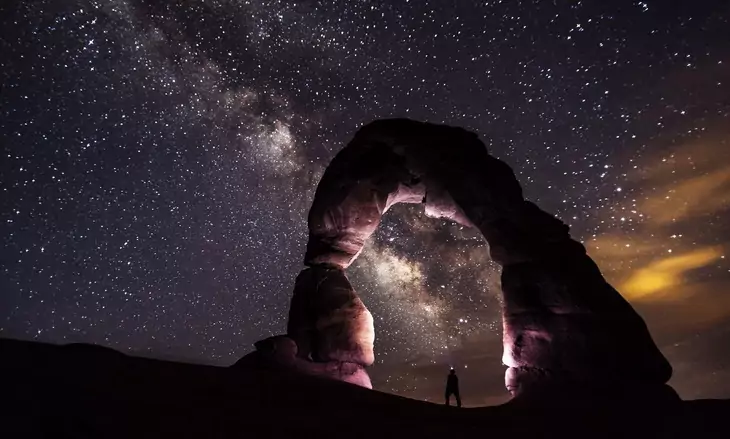
It is important to know where your equipment is and know how to find it in a hurry.
What Gear to Take
Here’s a list of some key items:
- Map
- Compass
- GPS
- First Aid Kit
- Head torch
- Hand torch
- Extra Illumination Devices
- Extra Batteries
- Extra Food
- Extra Water
- Extra Clothes
- Flairs
- Fire Lighters and Kindling
- Knife
- Warm Blanket
- Bug Spray
- Cell phone
- Wrist Watch
- Toilet paper
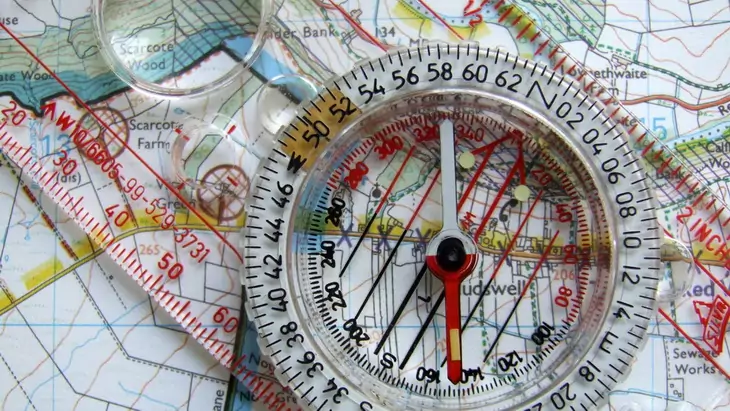
Choose a Decent Bag
You should be prepared for unexpected weather conditions so a waterproof bag is essential. Nylon treated or UPVC bags are a good option to go for and you want to avoid canvas or cotton bags as they are not as weather resistant and a bag of wet items is not what you want or need. It is also advised that you keep the weight of the bag down, if possible. Your bag will be one of the heaviest items you take with you. If you are planning to go on a short hike there is a great range of purpose made lightweight hiking bags that are definitely up to the job, if you are going for a longer stint and need to carry more the options vary. Our helpful article on the best ultralightweight backpacks will give you more options on what backpacks to choose, do read it.
Being able to adjust the bag to your body frame and requirements is very important and always look to bring a bag that has customizable straps, these will help you carry weight and ensure greater comfort. Also, remember to take a bag with good shoulder strap padding, this is crucial as padding improves comfort and relieves pressure and chafing.
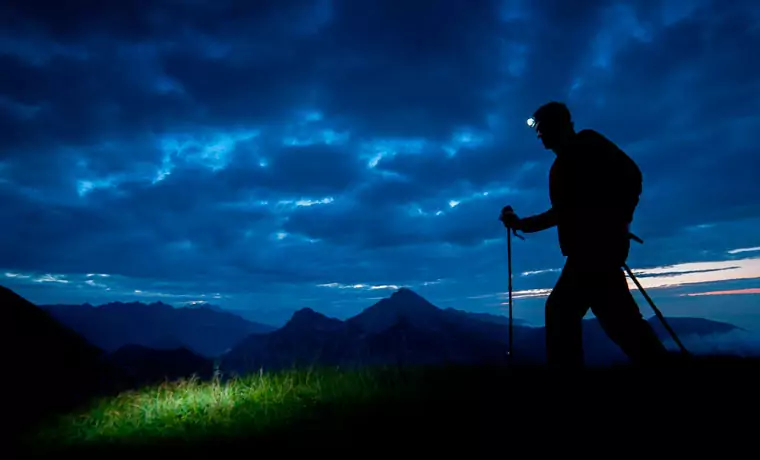
If you know you have to carry a heavy load choose a bag with a lifter strap, sternum strap and a hip belt. Lifter straps, sternum straps and hip belts are specifically designed to aid you in optimizing the distribution of weight that you have to carry and keep your bag securely positioned in the right place. You want to find the balance between your hips, back and shoulders when it comes to taking on weight and these straps will help you do that.
Now it is important to remember that the nature of a trip may vary in terms of the time it will take, the environment you are in and the equipment you will need. As a result, the requirements that a bag has to fulfill may not always be the same. The volume of the bag will depend on a number of the above variables, so do a mental check before you head off and make sure you pick the right bag for the job. Today the range of hiking bags on offer is huge and some bags come with nice design elements such as inbuilt hydration pack and a whistle. All these design elements are helpful and provide essential bits of hiking gear.
Wearing the Right Pair of Boots
Your footwear makes a big difference to your comfort and protection, so choose a pair of boots that fit and are flexible and are sturdy. At night you want to be able to feel the terrain underfoot as you often might not be able to see it. Bringing a good pair of waterproof ankle height boots is advised, either day hiking or backpacking boots are perfect. Be warned, mountaineering boots can be too rigid and are not designed for all purpose conditions and the high cut of the boot can be restrictive. Unless they are necessary it is advised that you a lighter boot which is more flexible and comfortable, so you feel freer to move your feet. This makes it easier for you to pick your way through varied terrain.

A firm tread ensures stable grip and should protect you both on and off the trail. Most decent boots have Vibram soles which are perfectly designed for your needs and are extremely durable. Remember, a boot that has a stiff midsole will be good for weight support, so useful for carrying heavy loads. However, the stiffness can take away from the sensation of feeling the terrain, so do be aware of this factor when choosing your footwear. Most importantly, your footwear choice should be comfortable as you will be covering some distance, make sure they fit correctly and feel secure.
Testing the Terrain
Your ability to judge your surroundings can be hampered by a lack of daylight. It is important to go slow, measure your footing and test your surroundings. Loose rocks and unstable terrain are harder to spot at night, so always ensure you test the ground before putting your full weight down if you are unsure.
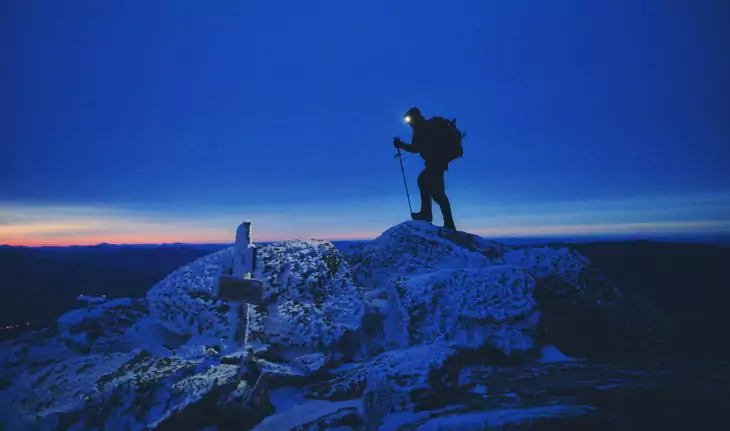
With a light, you should be able to gauge what is underfoot easier, but even still shadows, obstacles and changeable landscape can pose hazards and bring surprises. If it has been raining or weather conditions are averse, then you should be even more alert.
What Clothes to Wear
A range of layered garments is always advised to manage the temperature, ensure breathability and also protect against the elements. You want to bring a range of clothes that are comfortable and soft, light in weight and moisture wicking, as well as waterproof.
Packing waterproof and windproof essentials are always advised. You need a decent coat and trousers, as well as a good hat in case the weather picks up. All items should be easy to store for use when needed depending on the weather. Finding the right textiles to wear is also very important. For example, clothes made from textiles like merino wool or alpaca are perfect for hiking as these materials provide you with warmth and comfort and are moisture wicking.

The three layer clothing system is an excellent means of managing your temperature, especially at night when the temperature could plummet or in colder climates:
- Base Layer: Thin body-hugging, comfortable and breathable layers should be applied first. These are used to keep the skin dry and stop the buildup of sweat. Try to avoid cotton clothing and instead go for synthetic textiles, wool, or if you are feeling particularly extravagant you can go for silk.
- Secondary Layer: The middle layer of clothing provides insulation and should be loose fitting and moisture wicking, a good option is a woolen garment, fleece option or clothes made from synthetic textiles.
- Outer Shell: This last layer is used to protect against wind and rain and should be a hard shell product. Hard shell refers to items of clothing that are waterproof and windproof, as well as breathable.
Remember your clothes should be well suited to the environment you will be walking in so tailor your approach to the outdoors to make sure you are protecting yourself adequately.
Illumination
One of the biggest problems to think about is how you will find your way, locate other members of your group or find necessary objects whilst on your night time hike. You have to consider how different environments and weather can affect your hike, visibility can be affected by cloud cover, or no moonlight. Different environments will offer different visibility issues.

For example, thickly forested areas can throw a great deal of shadow onto your path, so when you are walking in a ravine and the moon is out, the light may not reach you. Whatever the conditions, you need to be a good light source when out at night, therefore it is essential to have an adequate supply of lighting, like torches or glow sticks:
- Hand Torches: Getting a decent torch is a must and you want to make sure you take a torch that suits your hiking needs. A good battery life paired with a strong beam and adjustable focus is very important when considering what torch to bring with you. Also, a well built and durable torch counts in order to ensure it will not break if dropped. Your torch does not have to be big or heavy, go for a lightweight and easy to pocket option. Hand torches are good for pinpointing specific objects or nightlife from a distance, but do be considerate if sighting wildlife as a torch can be blinding, this applies to people too. Also, carrying a torch takes away the freedom of having the use of your hands.
- Head Torches: Head torches are a great addition to your kit. They have many benefits. Two of the greatest benefits they provide are that they follow your line of sight and free up your hands. When wearing a head torch, ensure it is angled towards the ground and not directly at eye level, otherwise, you might blind your fellow travelers. Look for head torches that are comfortable and have adjustable light settings, good battery life and a strong beam. Good head torches should have a red light option, as you can apply this setting when encountering other groups on the trail. Also, the red light does not detriment night vision.
- Glow Sticks: If you want to use a light source that is effective but not overly powerful, glow sticks are excellent. Glow sticks are waterproof, so work in wet weather and require no batteries. Most glow sticks will last for around twelve hours and are perfect for use when stopping to eat or setting up camp. A good idea if you wish to remain visible is to attach one to your bag, they are brilliant visual markers and can help keep a group together.
- Batteries are essential: Torches are essential, but without a functioning battery, they soon become useless. Always bring a healthy amount of backup batteries and remember to keep a mental note of the battery life of your torch and keep on top of the replacements. Being left in the dark is not fun and can quickly change the atmosphere of a situation from pleasant to worrying. Having control over your lighting situation is very important, so make sure you are well stocked up on batteries.
See our comprehensive guide on the best rechargeable flashlights to light your way in the dark.
Night Vision
One of the wonders of nighttime hiking is you have the chance to use your natural night vision. Adapting your eyes to your nocturnal environment is a fun and great way of exploring the hidden world around you. Using artificial light will not only destroy your night vision it can also scare off wildlife. A lot of the time you can hike without the need for artificial light, the stars and the moon and a clear night sky can offer all the light that you need.

Remember to build your night vision, it is not develop in an instant and it takes time for your eyes to adjust. Do not stare directly at a light source and use peripheral vision to your advantage. You will be amazed at what reveals itself once you have fully adjusted your eyes to the night. In consideration to your fellow hikers night vision as well as when you encounter another group of hikers on the path, please remember to watch where you point any torch light, as it can be rude, or ruinous to night vision as well as blinding.
Finding the Way
It is important to be vigilant when out in the night as finding the path and sticking to it can be a challenge even with the aid of a torch. You must always keep an eye out for place markers, signposts and landmarks and be extra observant of your surroundings. Darkness can throw you off course with ease and if you venture from the path it is crucial that you memorize the way back or you can lose yourself in an instant. To help you find the right route slow the pace of your expedition and take your time when traversing the terrain, this also helps ensure you stay safe and lowers the chance of unexpected injuries.

Communication is crucial when in a group and can be a great way of keeping people aware of any present dangers on the path and of your location if for any reason you are not visible. Do keep in mind that any sound you do make will travel and if you are on a wildlife hike you can scare animals easily, so be mindful of your volume and tread carefully.
When confronting Wildlife
If you are lucky enough to stumble across some wildlife when out at night you should be considerate in your approach as you are in its habitat. For both your safety and the comfort of the animal think about the proximity between you and the animal and consider what type of animal it is. Obviously, if it presents a threat, then you should move away from that animal at a sensible pace trying not to startle it.

If it is an animal that you wish to observe and it poses no threat, then approach it cautiously and quietly and find a nice vantage point and remain as still as possible. Most animals probably have better hearing and night vision than you do. Never impose yourself. If you are carrying a torch avoid shining it on its face or even turn it off if you can. To know how to prevent wild animals from attacking you, read our important article on the topic to ensure your safety.
Wrapping it up
Well, there you have it, all you need to know regarding night hikes. We hope that you learned something new and that you found our article interesting to read and useful.

Fell free to share this article on social media so that your friends can read it as well, and if you have any questions or just want to share some of your night, outdoor adventure experience, visit our comment section below. Stay safe and enjoy the nighttime adventures.

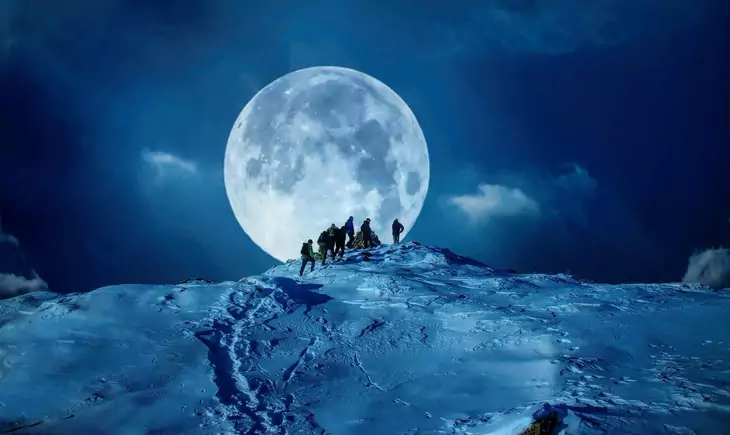

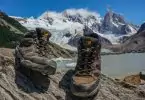




For a safe night hike: choose a trail you know, pack food and water, dress for the weather, pack extra batteries and power banks, and hike as a group.
Many people take the woods to hike the trails in solitude, but if you plan on hiking at night you may want to consider hiking with a group, especially if you are not familiar with the area.